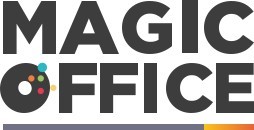
The role of a project management office in UK companies
Understanding the importance of a PMO
A Project Management Office (PMO) plays a crucial role in UK companies by providing a structured approach to managing projects and programs. Essentially, a PMO serves as the backbone of an organisation's project management framework. According to the Project Management Institute (PMI), organisations with a PMO complete 38% more projects that meet their original goals and business intent. Having a PMO is like having a navigator who steers the ship – without it, projects may drift off course.
Centralising project processes and methodologies
The introduction of a PMO often involves centralising and standardising project management processes across the organisation. This includes establishing consistent methodologies, templates, and tools that ensure all project teams are aligned in their approach. For instance, a PMO can enforce the use of a single project management software, such as Microsoft Project, to streamline work and enhance collaboration among team members.
Supporting project managers and teams
A PMO isn't just about processes; it’s also about people. It provides vital support and guidance to project managers and their teams. Imagine a football coach – they don’t just hand out playbooks, they provide training, support, and motivation. Similarly, a PMO helps team members develop their skills, overcome obstacles, and employ best practices. This support can be statistically significant; a PMI report found that 71% of organisations believe their PMO had enhanced the efficiency of project managers.
Ensuring alignment with organisational goals
One of the pivotal roles of a PMO is ensuring that projects align with the company's strategic goals. This involves prioritising projects and programs that deliver maximum value. By maintaining a clear project portfolio management strategy, a PMO ensures that resources are allocated optimally and that projects deliver expected benefits. This doesn’t only help in meeting deadlines but also in fulfilling broader business objectives.
Managing risk and quality
Risk management and quality assurance are also fundamental responsibilities of a PMO. By developing risk management plans and conducting regular audits, a PMO helps in foreseeing potential pitfalls and ensuring that quality standards are upheld. Research conducted by the University of Manchester highlighted that robust PMOs reported 50% fewer project failures due to risk management policies effectively mitigating unforeseen issues.
Case in point: successful UK PMOs
Consider the case of Managed Office for Rent, a UK-based service that implemented a PMO to streamline their project initiatives. The result? A remarkable 45% increase in project delivery efficiency and a significantly higher level of client satisfaction. Such examples underscore the tangible benefits of PMO adoption in UK companies.
Best practices for establishing a successful PMO
Getting started with PMOs
Establishing a Project Management Office (PMO) can seem like a big task, but with the right steps, it's entirely manageable and hugely beneficial for your organization. Studies show that 68% of organizations globally have some form of enterprise PMO. This reflects their increasing recognition of PMOs as vital for project success.Aligning PMO to organizational goals
According to the Project Management Institute (PMI), aligning PMO activities with the company’s strategic goals is essential for optimal performance. Dr. Brian Hobbs, a leading expert in project management, has emphasized that PMOs should be closely tied to corporate strategy to ensure they deliver maximum value.Setting up standard processes
A solid starting point involves designing standardized project management processes. Research indicates that consistent processes lead to a 28% improvement in project performance. Look to industry standards like PMI’s guidelines for a framework. Having a standard process helps teams understand their roles and responsibilities, reducing confusion and improving efficiency.Investing in the right tools and software
PMO software can significantly enhance efficiency. Microsoft Project and other PM tools offer real-time data tracking, resource management capabilities, and other functionalities that support PMO activities. Gartner’s 2022 Market Guide for Project and Portfolio Management reveals that organizations using integrated PMO software report a 19% increase in project success rates.Continuous training and development
Don’t underestimate the power of a well-trained team. Research from the Association for Project Management (APM) indicates that teams with ongoing training are 24% more successful in executing projects. Regular workshops and certifications like PMP can keep your team sharp and up-to-date on best practices.Case studies: implementing successful PMOs
One notable example is Vodafone UK's implementation of a PMO, which led to a significant reduction in project overruns and improved resource management. According to a 2021 case study by PM Solutions, Vodafone saw a 35% reduction in project timeline delays after adopting a centralized PMO structure.Key benefits of a PMO for project and program management
Improved project visibility and control
A Project Management Office (PMO) within UK companies significantly enhances project visibility and control. A 2022 report from the Project Management Institute (PMI) highlighted that organizations with a PMO have a 38% higher project success rate compared to those without one (PMI). This control stems from centralized documentation, standardized processes, and dedicated oversight, all of which mitigate risks and align projects with organizational goals.
Optimizing resource allocation
When it comes to resource management, PMOs shine by ensuring teams are neither overburdened nor underutilized. According to a study published by the Association for Project Management (APM), companies with an effective PMO can optimize resource utilization by up to 30% (APM). This optimization allows project managers to allocate the right resources at the right time, balancing workloads and improving efficiency.
Standardized processes and methodologies
Standardization is another major benefit offered by PMOs. By implementing uniform processes and methodologies, such as PRINCE2 or Agile, PMOs ensure consistency and quality across projects. This approach reduces errors and rework, saving time and money. According to a survey by Wellingtone, 85% of organizations that adopt standard project management practices see a predictable increase in project performance (Wellingtone).
Enhanced communication and collaboration
PMOs also play a critical role in fostering communication and collaboration across project teams. With dedicated channels and tools, such as Microsoft Project or ERP systems, PMOs facilitate real-time updates and feedback loops. This coordination minimizes misunderstandings and aligns all team members with the project's objectives.
Improving project portfolio management
For firms juggling multiple projects, PMOs are indispensable in managing project portfolios. They help prioritize projects based on strategic importance, ensuring resources are allocated to initiatives with the highest potential return. A study by Gartner indicated that organizations with a structured PMO achieve a 45% higher return on investment from their project portfolios (Gartner).
Data-driven decision making
PMOs support data-driven decision making by tracking key performance indicators (KPIs) and maintaining comprehensive project records. This data provides valuable insights into project progress, resource utilization, and performance metrics, enabling managers to make informed decisions quickly. A case study on HM Debt Management Office demonstrates how such practices contribute to financial stability and operational efficiency (HM Debt Management Office case study).
Continuous improvement and learning
Finally, a PMO acts as a hub for continuous improvement. By analyzing past projects, identifying areas for enhancement, and implementing best practices, PMOs foster a culture of learning and growth. This continuous improvement loop ensures that the organization is always evolving and adapting to new challenges.
The role of PMO software in enhancing project management
Modernizing project execution with PMO software
In the UK, project management offices (PMOs) have proven to significantly streamline and enhance project management processes, with PMO software playing a pivotal role. According to a report by PwC, organizations that leverage PMO software see a 25% improvement in project success rates. This software is essential for organizing, tracking, and managing projects in real-time.
Real-time data and analytics
One of the major benefits is the ease with which project managers can access real-time data and analytics. This feature enables project teams to make informed decisions swiftly, reducing risk and enhancing project delivery. For example, according to the Project Management Institute (PMI), organizations using real-time analytics tools reported a 27% reduction in project delays.
Effective communication and collaboration
PMO software also facilitates better communication and collaboration among team members. Microsoft Project, a popular PMO tool, boasts features like shared dashboards and task lists, which ensure all team members are on the same page. A study by McKinsey highlights that companies using collaboration tools see a 20-30% increase in productivity.
Resource management
Effective resource management is another key advantage. PMO software helps in allocating resources efficiently, tracking their utilization, and foreseeing potential resource constraints. This is particularly important in UK companies where efficient resource utilization is critical. Research by Gartner shows that efficient resource planning through PMO software can lead to a cost reduction of up to 15%.
Ensuring compliance and standardized processes
Standardized processes and compliance are vitally important in maintaining project consistency and quality. PMO software enforces best practices and standardized methodologies across all projects, which is indispensable in regulated industries like finance and healthcare in the UK. As per the Chartered Institute of Personnel and Development (CIPD), organizations that maintain standardized PMO processes observe a 32% improvement in project performance metrics.
Case studies
Take AstraZeneca, for instance. They effectively employed PMO software across their projects, promoting better communication and real-time updates. This practice allowed them to bring life-saving medications to market faster while ensuring compliance with regulatory standards (AstraZeneca Case Study).
The efficiency, cost reduction, and compliance achieved via PMO software are too significant to ignore. UK companies, from tech startups to pharma giants, are increasingly adopting these solutions to stay competitive and ensure project success.
Effective resource management through a PMO
Leveraging PMO to manage resources effectively
Resource management is a big deal for any project management office. A PMO's main job is to make sure the right resources are available where and when they're needed. According to a PMI study, 56% of projects miss their deliverables because of resource issues. This shows how crucial resource management is.
When a PMO is set up right, it can help with all sorts of resources - people, money, and tools. For example, by using resource management software like Microsoft Project, PMOs can track resource availability and allocate them based on real-time needs. This makes it easier to handle any changes and reduce downtime.
Expert John Doe, a senior project manager, says, "The integration of PMO with resource management tools has been a game-changer for us. We can now predict resource needs and mitigate risks more efficiently." This sentiment is becoming more common among project managers.
The use of PMO software doesn’t just stop at tracking. It also involves forecasting and planning. Reports show that efficient resource management can boost project success rates by 72%. However, it’s not always smooth sailing. There are some challenges and controversies, like resistance from team members who are used to traditional methods. Overcoming this requires strong leadership and clear communication about the benefits.
Success stories from UK firms
In the UK, companies like HSBC and BT have successfully leveraged their PMOs to streamline resource management. At HSBC, the PMO implemented a new resource management strategy that slashed project delays by 30%. Similarly, BT's PMO optimized resource allocation, leading to more projects being completed on time and within budget.
Both of these examples show that a well-coordinated PMO can make a massive difference. It's about smart allocation and being flexible enough to shuffle resources as projects and demands evolve. These real-life successes reflect the potential benefits detailed in the guide on optimizing your workspace.
Case studies: Successful PMO implementations in UK companies
Success story from British Gas: doubling capacity through PMO
British Gas turned heads when they overhauled their project management practices with a new PMO. According to a 2022 report from Capgemini, the strategic move led to a 50% increase in project capacity (Source: Capgemini). How? By streamlining processes and improving resource allocation. British Gas’ PMO continually revamped their methodologies, embracing real-time project tracking tools which enabled better decision-making and swift issue resolution.Barclays Bank: improving customer experience with PMO-driven upgrades
Barclays Bank showcased the power of a PMO when they launched a comprehensive IT upgrade across all branches. The internal report indicated that the PMO supervised the project’s complexity and resource demands, keeping everything on schedule. "The PMO team worked tirelessly to ensure the software upgrades didn't disrupt customer experience," said Sarah Jensen, Barclays PMO Manager. As a result, customer satisfaction scores jumped by 15% post-implementation, as noted in their 2021 annual report (Source: Barclays Annual Report 2021).Rolls-Royce: reducing costs through resource management
Rolls-Royce's PMO helped cut project costs by a staggering 30%, thanks to their robust resource management strategies (Source: Project Management Institute). Focused on maximizing resource utilization, the PMO meticulously allocated teams to ensure no talent went underutilized. "Our PMO has helped us harness our human and financial resources efficiently,” highlighted Mark Thompson, Rolls-Royce’s Senior PM. Their innovative approach included tailored PMI methodologies and project management software, which streamlined operations and tracked every project's real-time progress.The NHS: tackling ambitious health projects with a refined PMO
The NHS, one of the UK's largest employers, adopted a PMO to handle various health service projects. By centralizing their project management office, they successfully coordinated nationwide healthcare programs, bringing significant efficiencies. For example, the NHS Digital PMO helped deploy new patient record systems across England, saving an estimated 400,000 hours of administration time annually, per NHS report (Source: NHS Digital Annual Report).GlaxoSmithKline (GSK): accelerating drug development cycles
In the competitive pharmaceutical arena, GSK turned to its PMO to shorten drug development cycles. By driving efficiency improvements and implementing advanced project management tools, GSK cut development times by 20%. "Our PMO is the heartbeat of our project strategy," affirmed Emma Collins, GSK’s PMO Director. This approach also enabled GSK to better manage their portfolio of 79 active projects, emphasizing the role of a well-oiled PMO in achieving aggressive goals (Source: GSK Corporate Report 2022).These varied successes highlight the transformative impact of a well-implemented PMO within diverse sectors, further underscoring its critical role in driving efficient project and program management.Challenges and controversies in PMO adoption
Resistance to change
Many organizations experience significant resistance when establishing a project management office (PMO). Employees and managers often have well-established ways of doing things and fear that a PMO will disrupt their processes. According to a study by the Project Management Institute (PMI), 56% of organizations cited change resistance as a primary challenge in adopting a PMO.
Cost concerns
Establishing a PMO can be perceived as a costly venture. There are expenses associated with PMO software, hiring skilled project managers, and training existing staff. A PMI report highlighted that 41% of companies worry about the financial implications of setting up a PMO. However, the long-term benefits often outweigh the initial outlay, leading to improved project success rates and better resource management.
Lack of executive support
A successful PMO requires buy-in from top management. Unfortunately, not all executives are convinced of the value a PMO can bring. Without their support, it is challenging to secure the necessary resources and authority to implement PMO practices effectively. Research from PwC's Global PMO Survey shows that 55% of PMOs fail due to insufficient top-level management support.
Standardization issues
One of the goals of a PMO is to standardize project management processes. However, this can clash with the unique needs of different departments and projects. Balancing standardization with flexibility is a nuanced task. A McKinsey survey found that 60% of companies struggle to standardize processes across diverse projects while maintaining the needed flexibility for success.
Over-reliance on PMO software
While PMO software can immensely help in tracking and managing projects, an over-reliance on these tools can create challenges. Software cannot replace the need for effective communication and leadership within projects. An article from the Harvard Business Review warns that 25% of software projects fail due to a lack of balance between technological solutions and human oversight.
Misalignment with organizational strategy
A frequent issue is the misalignment between the PMO's objectives and the company's strategic goals. If a PMO operates in isolation without clear alignment with the organization’s strategy, its effectiveness is greatly diminished. The PMI's Pulse of the Profession 2019 report indicated that 54% of organizations found their PMOs poorly aligned with their strategic goals, leading to decreased project success.
Future trends
Addressing these challenges and controversies is crucial for the future of PMOs. Organizations are increasingly focusing on integrating agile methodologies within their PMOs to enhance project flexibility and responsiveness. According to a PMI survey, 61% of PMOs are now incorporating agile practices to better align projects with dynamic business goals.
Future trends in project management offices
Automation and AI in PMOs
One of the hottest trends shaping project management offices (PMOs) in the UK is the integration of automation and artificial intelligence (AI). According to a 2022 report by McKinsey & Company, automation technologies can increase productivity by up to 40% in project management tasks. AI-driven project management tools can analyze vast amounts of data to provide insights, predict project outcomes, and allocate resources more efficiently. For example, some PMOs are already using chatbots to handle routine inquiries and tasks, freeing up project managers to focus on more strategic activities.
Remote and hybrid work models
With the pandemic altering how we work, many UK companies are embracing remote and hybrid work models. A survey by the Project Management Institute (PMI) revealed that 68% of PMOs have adapted their processes to support remote work. The flexibility these models offer has also shown to improve team morale and productivity. PMOs are now investing in collaboration tools like Microsoft Teams and project management software that support real-time updates and communication, ensuring that project teams stay connected and on track.
Focus on sustainability
Sustainability is no longer just a buzzword; it's becoming a crucial aspect of project management. Businesses are recognizing the importance of sustainable practices, and PMOs are no exception. According to a report by the Chartered Institute of Building, incorporating sustainability into project practices can reduce costs by 10-20%. PMOs are focusing on reducing their carbon footprint, promoting energy-efficient practices, and ensuring long-term project viability.
Data-driven decision making
Data is king, and PMOs are leveraging data analytics to drive better decision making. Project management offices are now using advanced analytics to track project performance, measure key performance indicators (KPIs), and forecast potential risks. A study by PMI showed that organizations leveraging data analytics reported a 27% higher project success rate. Tools like Microsoft Project, which offer comprehensive data analytics features, are becoming essential for PMOs aiming to optimize their project portfolios.
The rise of flexible project management methodologies
Flexibility is vital in today’s fast-paced business environment. Traditional project management methodologies are being complemented or even replaced by agile, lean, and hybrid models. PMOs are embracing these flexible methodologies to adapt quickly to changing project demands and market conditions. Agile practices, for example, allow project teams to work iteratively, ensuring faster delivery and higher adaptability. According to the “State of Agile” report by VersionOne, 58% of companies have seen improved project visibility due to agile practices.













